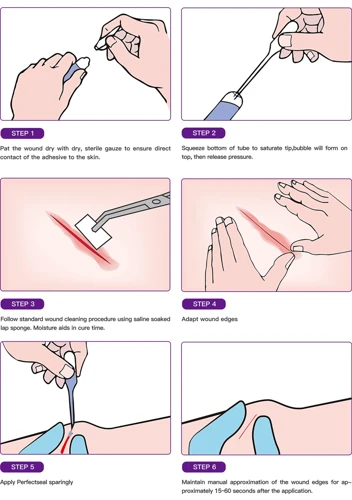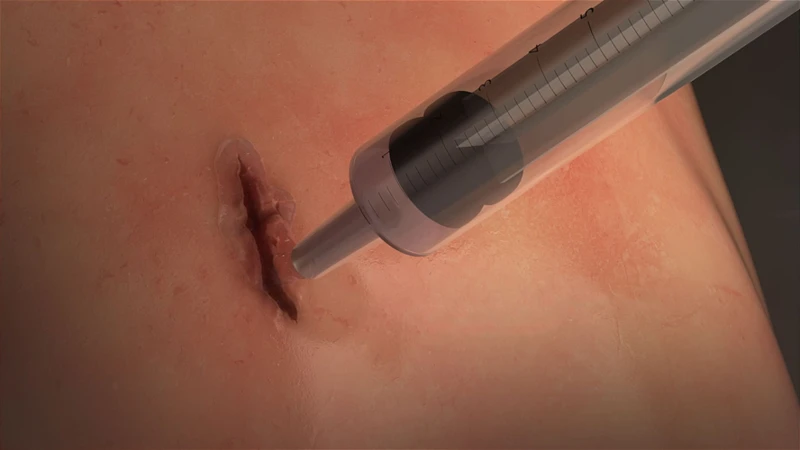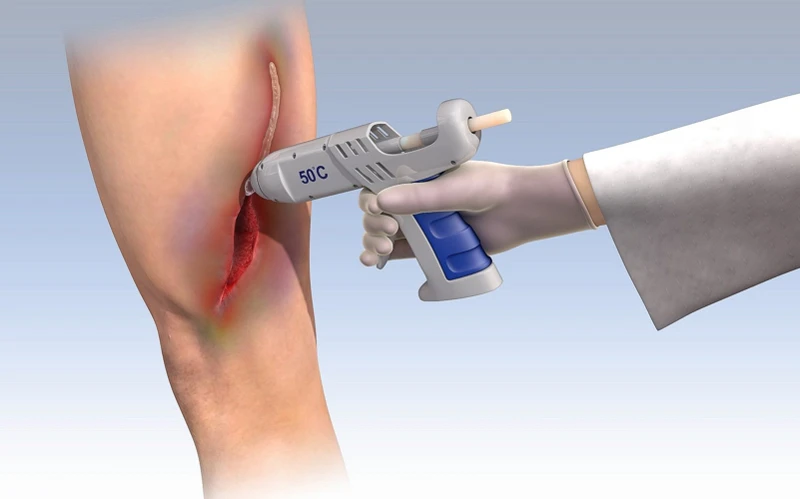The advent of medical adhesives has revolutionized the way clinicians approach wound closure. Surgical glue application, a technique that has gained traction over the years, offers an efficient and less invasive alternative to traditional suturing. This adhesive technology not only simplifies the process but also enhances patient comfort and recovery time.
Understanding Surgical Glue Application
Utilizing surgical glue involves a simple yet precise technique that facilitates the quick sealing of wounds. Healthcare providers often opt for this method due to its rapid polymerization, which creates a strong bond between tissue edges, effectively sealing the wound and providing a barrier to bacteria.
Surgical Glue vs Stitches: Comparing Wound Closure Methods
The debate between surgical glue vs stitches centers on factors such as wound type, location, and patient needs. While stitches are traditional and offer strong wound support, surgical adhesives provide a quicker, suture-less solution that can reduce scarring and risk of infection.
Indications for Using Surgical Adhesive
In the realm of surgery, selecting the appropriate wound closure method is crucial for optimal healing. Skin adhesive in surgery emerges as a preferred choice under specific circumstances.
When to Choose Skin Adhesive in Surgery
Surgeons may opt for skin adhesive in surgery for superficial lacerations, surgical incisions, or laparoscopic procedures. The key is to identify situations where the tension across the wound is minimal, and the risk of infection is low.
Contraindications: When Not to Use Surgical Glue
However, there are cases when using surgical adhesive might not be suitable. These include deep wounds requiring layered closure, high-tension areas, or in patients with known allergies to cyanoacrylate, the main component in many surgical glues.
How to Use Medical Glue for Wound Closure
Mastering how to use medical glue for wound closure ensures that healthcare professionals can provide effective and safe treatment for their patients. The process involves careful preparation, application, and knowledge of the product.
Preparation for Surgical Glue Application
Before applying surgical glue, the wound should be thoroughly cleaned and dried. Surrounding skin must be free of oils or ointments to ensure the adhesive bonds properly.
Applying Dermabond: Step-by-Step Guide
- Cleanse the wound area thoroughly.
- Approximate the wound edges gently.
- Apply a thin layer of Dermabond over the wound.
- Hold the edges together for a few seconds to allow the adhesive to set.
Cyanoacrylate for Wounds: Technique and Safety
When using cyanoacrylate for wounds, it’s essential to administer the product with precision, avoiding contact with the wound bed to prevent irritation and ensure proper healing. Protective equipment should be worn as the adhesive can bond to skin and instruments quickly.
Surgical Wound Sealing: Best Practices and Techniques
Adhering to best practices in surgical wound sealing is pivotal for achieving successful outcomes. This includes a meticulous application process and understanding the properties of the adhesive used.
Ensuring Effective Wound Closure with Surgical Glue
For effective wound closure with surgical glue, the adhesive must be applied in a controlled manner, ensuring a seal that is both flexible and durable. Avoiding excessive tension on the wound edges is also crucial for maintaining the integrity of the closure.
Post-Application: What to Expect After Using Surgical Adhesive
Following the application of surgical glue, patients can typically expect minimal discomfort and a quick return to daily activities. The adhesive naturally sloughs off as the wound heals, which usually occurs within 5 to 10 days.
Post-Surgery Wound Care with Surgical Glue
Effective post-surgery wound care is essential for the healing process. When a wound has been sealed with surgical glue, certain precautions help ensure proper recovery.
Monitoring the Healing Process
Regular observation of the wound site is necessary to track progress and detect any early signs of complications. The area should remain dry and clean, and any swelling or redness should be reported to a healthcare professional.
Tips for Maintaining the Integrity of the Surgical Glue
- Avoid soaking the wound in water.
- Do not apply creams or ointments over the adhesive.
- Protect the area from excessive movement or stretching.
Potential Complications and How to Address Them
While the use of medical adhesives is generally safe, being vigilant about potential complications is a key part of post-operative care.
Identifying Signs of Infection or Adverse Reactions
Signs of infection, such as increased pain, redness, or discharge, should prompt an immediate consultation with a healthcare provider. Similarly, if an adverse reaction to the adhesive is suspected, medical advice is essential.
When to Seek Medical Assistance
If complications such as wound dehiscence or signs of infection occur, it is imperative to seek medical assistance promptly to prevent worsening of the condition and to ensure appropriate intervention.
When it comes to closing wounds or incisions, surgical glue is a common alternative to stitches or staples. If you’re looking for a step-by-step guide on how to properly apply surgical glue, you’ve come to the right place. For more general tips, you might want to read our article on how to apply glue for various applications. And if you’re dealing with skin adhesives, our specific guide on how to apply skin glue can be quite helpful. Finally, if you’re working with models or crafts and need to know how to handle mishaps, check out our insights on how to remove model glue. Whether it’s for medical purposes or DIY projects, understanding the right application techniques is essential for the best results.
Conclusion: The Role of Surgical Glue in Modern Medicine
Surgical glue stands as a testament to innovation in medical technology, offering a viable and often preferable alternative to traditional suturing. As the medical community continues to evolve, the role of these adhesives in patient care is likely to expand, enhancing the healing experience for patients around the world.



